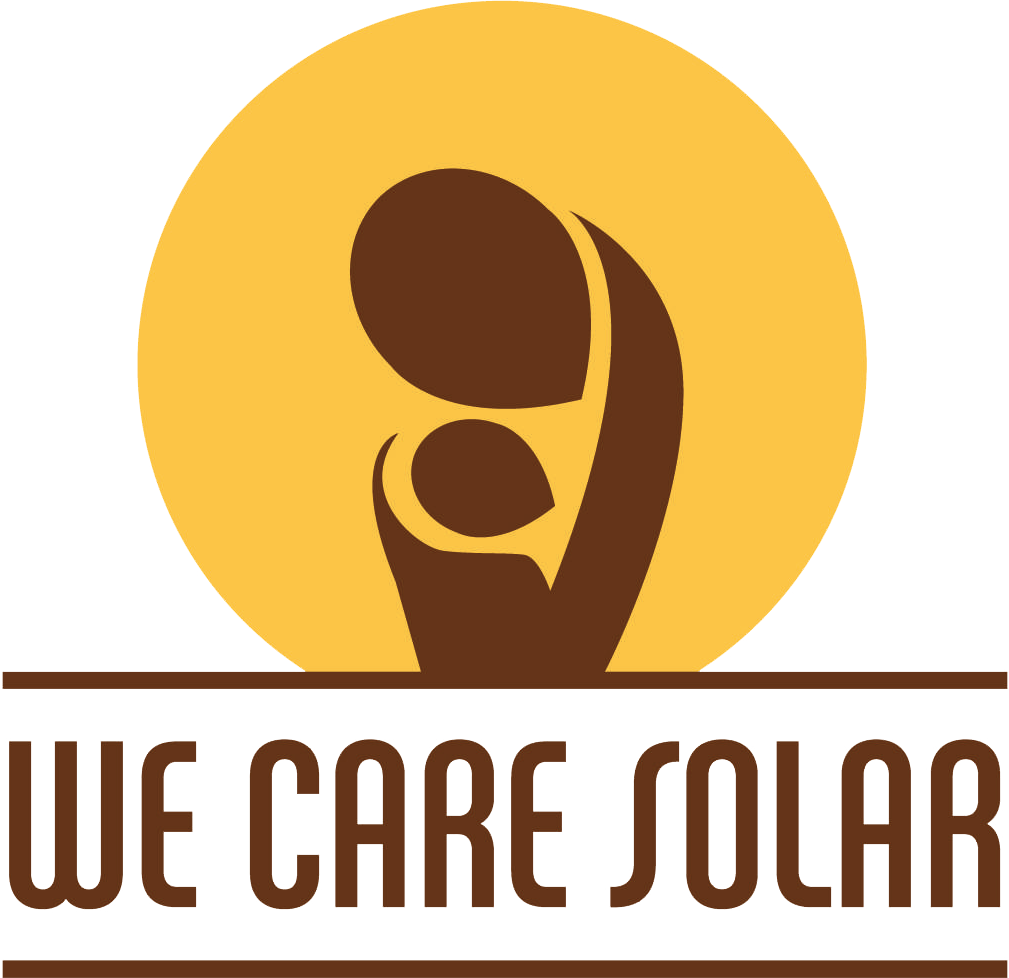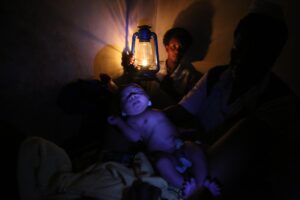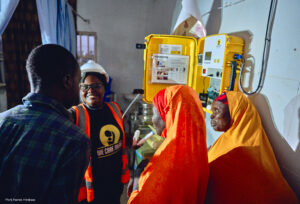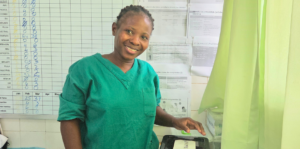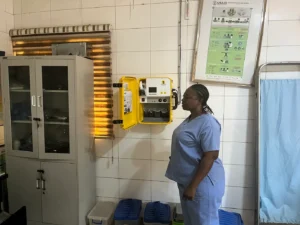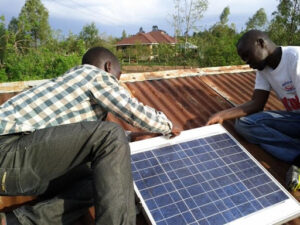 Caesar is an expert driver – seasoned on the roads all through the Great Lakes Region of Uganda, Kenya, Tanzania and Rwanda. “You can drive all the way around this Lake and arrive back in Kampala on the other side!” On a Sunday afternoon in Uganda, along with Dorah and Jairus, the team picks me up in Jinja and we drive on to Iganga to pick up Modest. With the Pathfinder International crew assembled we travel on to the border crossing at Busia into Kenya.
Caesar is an expert driver – seasoned on the roads all through the Great Lakes Region of Uganda, Kenya, Tanzania and Rwanda. “You can drive all the way around this Lake and arrive back in Kampala on the other side!” On a Sunday afternoon in Uganda, along with Dorah and Jairus, the team picks me up in Jinja and we drive on to Iganga to pick up Modest. With the Pathfinder International crew assembled we travel on to the border crossing at Busia into Kenya.
Pathfinder International is one of the NGO partners in the Solar Suitcase Project supported by Linkin Park’s Music for Relief program. Though the majority of these suitcases have been installed in Uganda, Pathfinder requested three Suitcases for maternity clinics in Kenya that conduct deliveries in darkness. As a We Care Solar Ambassador, I come along to provide onsite installation training for the group so that they can install independently in the future.
The Ugandan and Kenyan Pathfinder teams drive in a two-truck caravan to the Kogweno health dispensary at Kendu Bay. This is one of several health facilities where we will install Solar Suitcases in Kenya – former drug dispensaries that have grown to offer the obstetric deliveries. Some now deliver as many as 40 babies in a month.
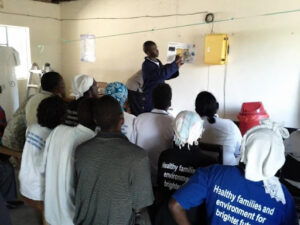 Modest and Jairus work together to assemble the hardware needed to install the solar panel to the rusty corrugated tin roof. As I have done with four previous groups, I sit on the rooftop ridge with them while they put into practice what they learned in the 2-day course I taught in Kampala. Measure twice, drill once. With the panels firmly fastened to the cross beams and the rooftop holes filled with silicone, we climb down the ladder and begin working inside.
Modest and Jairus work together to assemble the hardware needed to install the solar panel to the rusty corrugated tin roof. As I have done with four previous groups, I sit on the rooftop ridge with them while they put into practice what they learned in the 2-day course I taught in Kampala. Measure twice, drill once. With the panels firmly fastened to the cross beams and the rooftop holes filled with silicone, we climb down the ladder and begin working inside.
All of the facilities I have been to are built out of concrete. Sometimes the mix is so sandy, the wall crumbles beneath the drill; sometimes the walls are so hard you know the building will stand a hundred years. Most delivery rooms have a bed, a baby-weighing scale, and a few sterilized instruments kept on the table. The bed is often just that – a bare foam mattress where the mother lays. At larger facilities there may be a delivery table with stirrups and two or three other beds in the room for deliveries. There is often a kerosene lantern on the table, or evidence of melted candles. The walls are always plastered with posters – some for the benefit of patients (e.g. Sleep Under a Mosquito Net) and others for midwives (e.g. How to assign APGAR Scores.)
At every facility we go through the same routine. First, we ask the midwife a few questions to determine where deliveries are done and where light would be most helpful. The LED lights are unique in that they can be mobile – a nice feature when you need focused light in a few locations. Cesar and Jairus firmly attach the bright yellow Solar Suitcase to the wall, and begin wiring the lights. Modest thinks of creative solutions for the midwife’s lighting requests. The midwives are overjoyed with their new lights, realizing that they will no longer need an assistant to hold a kerosene lantern during a delivery or be forced to hold a cellphone in their mouth to direct a small beam of light while they work.
After 15 installations with the five partner agencies – Kissito Healthcare International, Safe Mothers Safe Babies, Save the Children, Pathfinder International and Uganda Private Midwives Association – what has made an impression on me is the time and attention the trainers take to carefully teach health workers how to operate the Solar Suitcase and each of its appliances. We have all seen our share of broken solar electric systems in Uganda, in part, because end-users never received a proper orientation and training. And we want health workers to feel empowered and take ownership of our technology. I stand in the back of the room, beaming with pride as I watch Jairus, Modest and Cesar teach in their own unique way. And they convery that the message from We Care Solar really does say, We Care.
